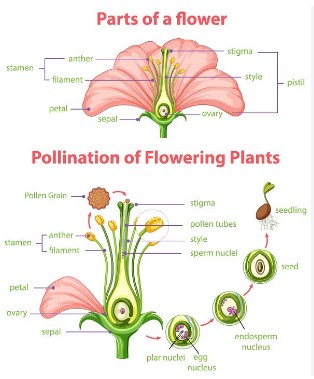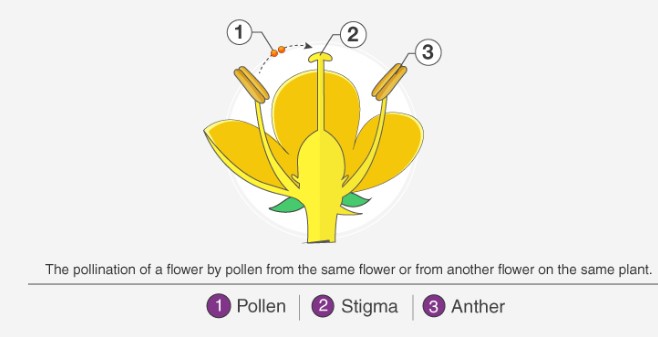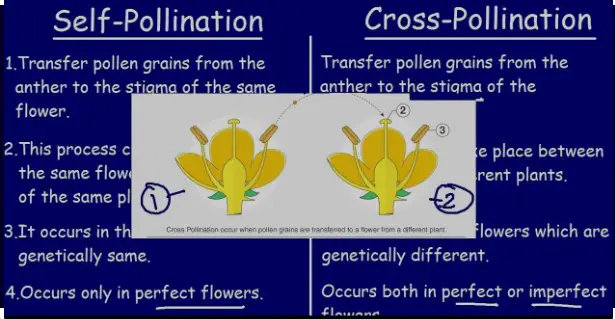In the world of plant reproduction, there are two distinct types of fertilization: self-fertilization and cross-fertilization. While both types of fertilization result in the production of a new generation of plants, there are important differences between the two that are important for understanding how plants reproduce and develop.
The benefits of self fertilization

Self-fertilization is the process by which a single plant can fertilize itself, without relying on cross-pollination from other plants. This type of fertilization offers a number of advantages over cross-pollination, including increased genetic diversity, improved disease resistance, and the ability to achieve higher yields of fruits and vegetables.
This can help ensure that a species will remain robust in the face of environmental changes. By comparison, cross-pollination relies on different plants exchanging pollen, which can result in weaker plants and slower growth rates.
Ultimately, self-fertilization is a process that can benefit any plant species looking to maximize its growth potential.
The benefits of cross fertilization
Cross fertilization is a process that allows different plants to combine their resources and create a more nourished, healthy and robust offspring. It is a process that has been employed for centuries, as farmers and gardeners saw the potential benefit in combining different strains of plants to create something new.
But, what is the difference between self-fertilization and cross fertilization? Self-fertilization is when the same plant is used to provide both the male and female gametes, while cross fertilization is when two different plants are used to provide the gametes. Cross fertilization produces more diverse and hardy offspring, making it the preferred method of fertilization for most farmers and gardeners.
The potential benefits of cross fertilization are vast, including increased yield, greater resistance to disease, greater adaptability to changing climates, and improved flavor and nutrient content of the resulting produce. Ultimately, cross fertilization offers a way to improve the quality of the harvest and the health of the plants, creating a more productive and sustainable environment.
The differences between self and cross fertilization
When it comes to fertilization, there are two distinct types: self and cross fertilization. While both are important processes in the reproductive cycle of plants, there are marked differences between the two. Self-fertilization is the process in which an individual plant’s pollen fertilizes its own ovules, without the need for pollen from another plant.
In contrast, cross-fertilization is when the pollen from one plant is used to fertilize the ovules of another. This ensures that genetic diversity is maintained, and that the offspring of the plant will not be identical.
Self-fertilization often results in inbreeding, which can lead to decreased vigor and fertility in the offspring of the plant. Cross-fertilization, on the other hand, introduces new genetic material to the offspring, which can result in a stronger, healthier offspring. While both processes are important to the reproductive cycle of plants, there is no doubt that cross-fertilization is the preferred method for ensuring genetic diversity and strength in the offspring of a plant.
Examples of self and cross fertilization

When discussing the differences between self and cross fertilization, it is important to understand the important distinctions between the two. Self fertilization is when a single plant produces both male and female gametes, which then fuse together to form the embryo. This is commonly seen in plants such as grasses, where the male and female reproductive organs are located on the same plant.
Cross fertilization, on the other hand, is when the male and female gametes come from two different plants. This is most common in flowering plants, where the male and female reproductive organs are located on separate plants.
Both self and cross fertilization have their advantages and disadvantages, and understanding the differences between the two can help you decide which type of fertilization is best for your particular plants.
Best practices for self and cross fertilization
When it comes to fertilization, there is a key distinction between self and cross fertilization. Self fertilization occurs when the pollen from the same flower or the same plant pollinates the flower’s ovules.
Both self and cross fertilization are essential for a healthy and thriving plant population. Self fertilization is important to maintain genetic stability, while cross fertilization is essential for introducing genetic variability.
To ensure the health of your plants, it is important to understand the difference between self and cross fertilization and practice both methods for the best results.
Conclusion
In conclusion, self-fertilization and cross-fertilization both play important roles in the reproductive cycle of plants. Self-fertilization is a process in which a plant’s own ovules are fertilized by its own pollen, while cross-fertilization is a process in which a plant’s ovules are fertilized by pollen from another plant.
Although both processes are necessary for the successful reproduction of many plant species, cross-fertilization is generally preferred by many plants as it increases the genetic diversity of the offspring and allows for the possibility of more successful or hardy offspring.

